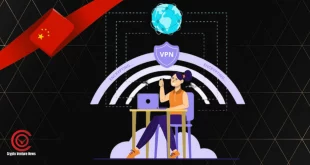The Web 3 technology is also known as Web3 or Web 3.0 and it is a term that you have heard numerous times lately. It simply implies the next iteration of the internet that encourages decentralized protocols and tries to decrease the dependency on big tech entities like Amazon, Netflix, and YouTube. But what is this technology and why is everybody talking about this lately?
What Is Web 3 Technology?
To understand Web 3.0, it is important to understand what came before thaṭ. The first type of internet which is known as the Web 1.0 arrived in the late 1990s and consisted of a collection of homepages and links. Websites back then were not specifically interactive. You could not do much apart from reading things and publishing basic content for others to read.
Brian Brooks, the CEO of Bitfury, put it interestingly in a speech to the U.S. Congress in December 2021:
“If people remember their original AOL account, it was an ability to look in a curated ‘walled garden’ at a set of content that was not interactive, but was presented to you on AOL, the way that Time Magazine used to show you the articles they wanted you to see inside of their magazine, just you could see it on a screen.”
Web 2.0 came next. Some people call this the “read/write” variant of the internet, in implication to a computer code that allows you both open and also edit files rather than just see them. This variant of the Internet enabled people to not only consume content, but form their own and publish it on blogs like Internet forums, Tumblr, and also marketplaces like Craigslist. Later, the evolution of social media platforms including Twitter, Facebook, and Instagram took content sharing to new levels.
After a while, the general public turned cognizant of the way their personal information was being gathered by tech giants and used to formulate tailored advertisements and marketing campaigns across the internet. Facebook, in specific, has had the spotlight shone on it several times for breaching the laws of data privacy and was hit with a $5 billion fine in 2019 which was the biggest penalty ever issued by the FTC (Federal Trade Commission).
Even though Web 2 has brought the world great free services, a lot of people have become tired of the new “walled gardens” these huge tech entities have created and wish to have more control over their content and data. This is where Web 3 technology comes in.
Web 3 can be evaluated as the “read/write/own” segment of the Internet. Rather than just using free tech channels in exchange for our data, users can take part in the governance and function of the protocols themselves. This implies people can become players and also shareholders, not just users or products. The Web 3.0 companies include Mysterium Network, DECENTERNET, and many more.
In Web 3.0 blockchain, these shares are also known as cryptocurrencies or tokens, and they portray ownership of decentralized networks which are called blockchains. If you own enough of these tokens, you have a say over the network. Holders of governance cryptos can spend their assets to vote on the future of, say, a decentralized lending technology. Brook further said,
“The real message here is that what happens on the decentralized internet is decided by the investors versus what happens on the main internet is decided by Twitter, Facebook, Google, and a small number of other companies.”
What Can You Do Using The Web 3 Technology?
Web 3 makes the growth of cooperative governance frameworks for once-centralized items possible. Anything at all can be tokenized, whether it is a meme, an art piece, a person’s social media results, or tickets to Gary Vee’s conferences.
A great instance of the paradigm shift is in the gaming space. Gamers grumble endlessly related to the bugs that developers leave in their favorite video game, or how the new patch has upset the balance of their favorite weapon. With Web 3 technology, gamers can now invest in the game itself and vote on how things should be operated. Large Web 2 entities, such as Ubisoft and Meta, are formulating virtual worlds powered in part by Web 3. NFTs (non-fungible tokens) will also play a crucial role in restructuring the gaming industry by enabling players to become the immutable owners of the items they hold.
Features Of Web 3.0
Now that the definition of Web 3.0 is clear to you, to make your knowledge more fundamentally correct, there are some of the defining features of the Web 3 technology that we have discussed in this section. Here are some of the Web 3.0 features.
Decentralization
This is a key tenet of Web 3.0. In Web 2.0, computers employ HTTP in the form of unique web addresses to find data, which is kept at a fixed location, mainly on a single server. With Web 3.0, because data would be found dependent on its content, it could be stored in several locations at the same time and hence be decentralized. This would break down the huge databases presently held by internet giants like Google and Meta and would hand greater control to users.
Trustless and permissionless
Along with that to decentralization and being created upon open source software, Web 3.0 will also be completely trustless and permissionless. As an outcome, Web 3.0 applications will operate on decentralized peer-to-peer networks or blockchains, or a combination thereof, such dApps (decentralized apps).
Artificial intelligence (AI) and machine learning
In the Web 3.0 technology, computers will be able to evaluate data similarly to humans, via technologies based upon Semantic Web ideas and natural language processing. Web 3.0 will also employ machine learning, which is a branch of AI (artificial intelligence) that uses data and algorithms to replicate how humans learn, gradually enhancing its accuracy. These capabilities will allow computers to produce more relevant and faster outcomes in a host of areas such as new materials and drug development, as opposed to merely targeted advertising that creates the bulk of present efforts.
Connectivity and ubiquity
With Web 3.0, data and content are more linked and ubiquitous, availed by several applications and with a growing number of regular devices linked to the web. One Web 3.0 example of which is the IoT (Internet of Things).
Criticisms Of The Web 3 Technology
The primary criticism of Web 3 technology is that it falls short of its ideals. Ownership of the blockchain networks is not equally distributed but is concentrated in the hands of early adopters and the venture capitalists. A public spat lately erupted on Twitter between Block Inc. CEO Jack Dorsey’ and various venture capitalists on Web 3, bringing this debate to the limelight.
At the heart of the critiques is the notion of “decentralization theater,” where blockchain ventures are decentralized in name but not in objects. VC-backed investments, private blockchains, or DeFi (decentralized finance) protocols where just a few people hold the private keys to hundreds of millions of dollars are all instances of decentralization theater.
And despite the supposedly leaderless sector of protocols, there are clear straw men. Izabella Kaminska, who is the outgoing editor of the FT blog Alphaville, brought up the huge amount of power that Vitalik Buterin, the co-founder of Ethereum, prevails to have over the network, even though he is no longer associated with its development. He said,
“Vitalik is a funny and contradictory phenomenon in his own right. He operates as the spiritual leader of a de facto headless system while holding incredible sway and influence over the headless system he created and oversees.”
Conclusions
Things are not much better inside the decentralized finance protocols. They are rife with voter absenteeism, often depend on centralized infrastructure and the obstacle to entry in formulating them is still high, given that formulating blockchains looks to be arcane magic preserved for only the most highly specialized engineers in the space. But despite its issues, the Web 3 technology has a lot of potentials. Whether it is too idealistic to put into practice will be something that regular users will discover over the next decade.
Frequently Asked Questions On Web 3.0
1. When will Web 3.0 be released?
Web 3.0 technologies will play a crucial role in retail in 2022. This technology is already in the industry and there are various companies to operate on this technology.
2. What are examples of Web 3.0 applications?
The example of Web 3.0 can be traced to famous cryptos like Bitcoin. Sending Bitcoin directly to another person without the involvement of any other intermediary.
3. Is Google Drive a Web 3.0 tool?
There is a lot of innovation that is involved in data storage. However, the present state of data storage can be altered with Web 3.0 technologies like blockchain and big data. As a normal users, we store our data on Google Drive and other cloud storage options on the internet, but they do not operate on the Web 3 technology.
- AI Blockchain Projects: 8 Effective Ventures To Know Now - 03/08/2024
- Hyperledger Fabric: Why Has It Become So Famous? - 03/08/2024
- Ethereum Name Service: An Easy Step-By-Step Guide For You - 03/08/2024
 Crypto Venture News One stop Crypto Track Down
Crypto Venture News One stop Crypto Track Down 






